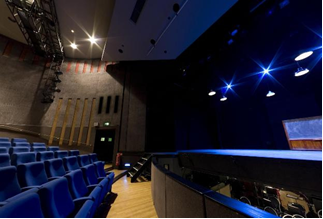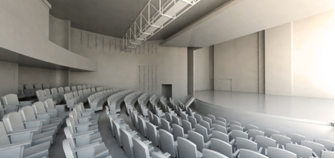Improving Orchestra Pits for the Benefit of Musicians
Stephen Dance - dances@lsbu.ac.uk
Alba Losada - albaloa@hotmail.com
Sarah Large- sjlarge62@googlemail.com
Sheldon Walters - sheldon.walters@didata.com.au
Georgia Zepidou - zepidoug@lsbu.ac.uk
Luis Gomez - gomezagl@lsbu.ac.uk
The Acoustics Group, Department of Urban Engineering
London South Bank University
Borough Road
London, SE1 0AA, UK
Popular version of paper 1pAA5
Presented Monday afternoon, May 14, 2012
163rd ASA Meeting, Hong Kong
Increased publicity regarding hearing loss in those working in the music and entertainment sectors has heightened the need to reduce noise exposure. This is particularly important for classical musicians who are constantly practicing, rehearsing and performing to refine their skills. Musicians tend to have a negative reaction towards earplugs hence the need to find alternative noise mitigation solutions. With the full co-operation of the Royal Academy of Music the noise exposure of musicians has been investigated to establish their typical noise dose. It was found that the musicians had the highest noise dose when performing in the orchestra pit. The orchestra pit is the most challenging acoustic environment, primarily due to the limited amount of available space.
Architects have tended to design auditoria at the expense of the musicians' environment, the orchestra pit. The traditional approach to improving the acoustics of orchestra pits has been to increase the absorption on the rear wall and to introduce bass traps in the corners, an alternative approach has been taken for the proposed refurbishment of the theatre at the Royal Academy of Music. Firstly, the room acoustics of the 230 seat 3456 m3 Jack Lyons theatre at the Royal Academy of Music, see figure 1, was measured. Secondly, a computer model, was calibrated to the measurements to predict the effect of the proposed architectural changes. These changes were designed to improve the environment of the musicians whilst keeping the same or similar natural acoustic in the auditorium, as the conductor is king!
Figure 1. Royal Academy of Music Jack Lyons Theatre

Average measured reverberation times are shown in figure 2; these were found to be a little low for opera and musical theatre at around 1.0 second at mid-frequencies. The singers were asked for their view on the theatre's acoustic, there was agreement, the theatre was thought to be a little dry.
Figure 2. Averaged measured reverberation times in the Jack Lyons theatre.

The proposed refurbishment specified a reverberation time of 1.2 seconds which is more appropriate for a 230 seat opera theatre. A room computer simulation of the theatre was developed using Google Sketchup, see figure 3, then calibrated to the measurements. see figure 4.
Figure 3. Rendered Sketchup model of the Jack Lyons theatre

Alternative theatre designs were then tested by the computer model, such as different wall finishes. The velour wall finishing was replaced with timbre for the side walls. The resultant change in reverberation time can be seen in Figure 4, a mid frequency RT of 1.2 seconds, as per the specification. This would please both the musicians and singers.
Figure 4. Predicted reverberation times incorporating proposed theatre changes

A second design change was introduced to reduce the noise level in the orchestra pit without affecting the sound in the auditorium. This was achieved by replacing the traditional solid pit rail with an acoustically transparent pit rail, thus allowing the music created in the pit to more easily propagate into the auditorium. The balance at the conductor's position was maintained whilst reducing the sound level in the pit by approximately 6 dB across the frequency range, see Figure 5.
Figure 5. Predicted sound level in the theatre pit, with and without a solid pit rail.

It was shown that a small simple design change to an orchestra pit can result in a significant reduction in noise levels, 5-8 dB, without affecting the quality of musical performance as experienced in the auditorium. It was recommended to the Royal Academy of Music that the theatre pit rail be replaced with an acoustically transparent double pit rail design.




